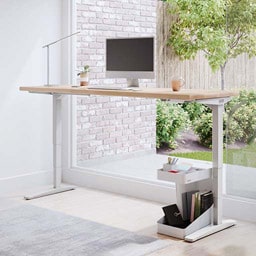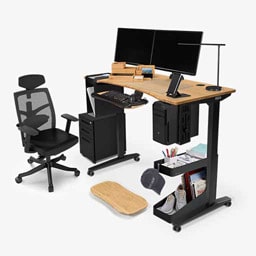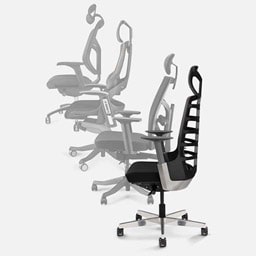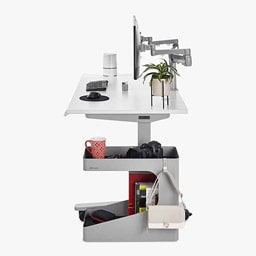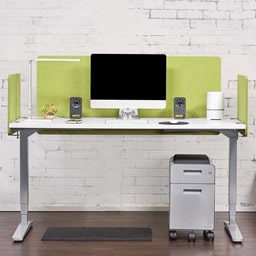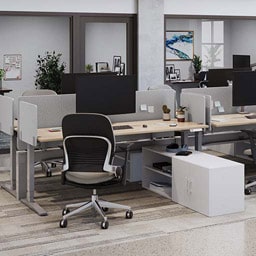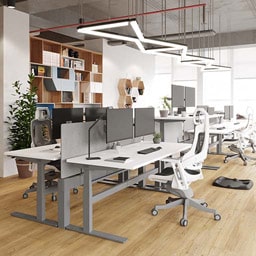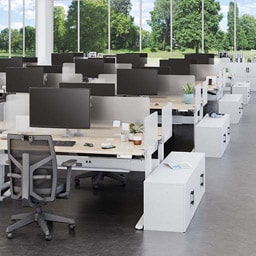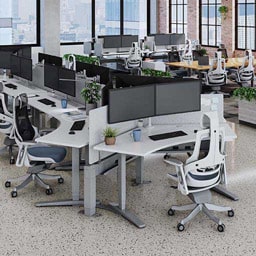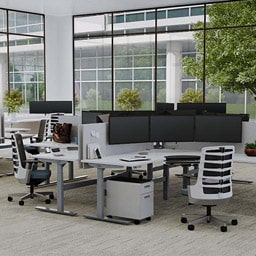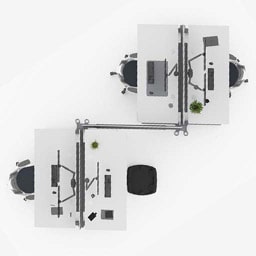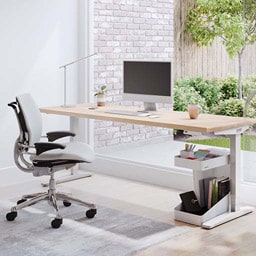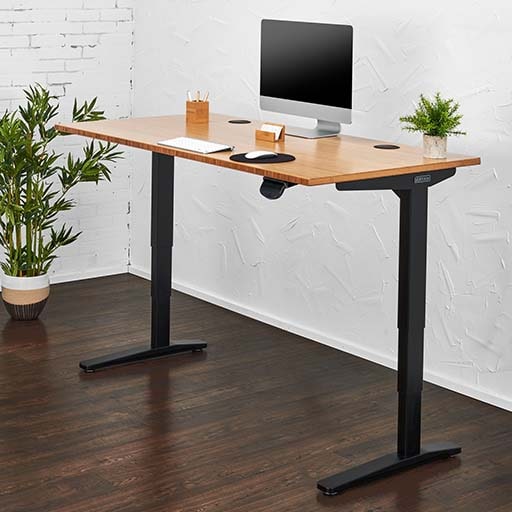Ergonomic chairs: how to sit comfortably and work productively | UPLIFT Desk
Posted by UPLIFT Desk on Jun 15th 2023

Ergonomic chairs: how to sit comfortably and work productively
Ergonomic chairs offer many points of adjustment. Here's the best way to find that perfect fit.
Ergonomic chairs are designed to provide comfort and support for the body while seated at a workstation. By properly adjusting an ergonomic chair, you can work more comfortably and productively for longer periods of time. Let's look at the different aspects of ergonomic office chairs and how to adjust them properly. While finding a good supportive chair is important, alternating between sitting and standing at an adjustable height desk is ideal and lessens the need for a $1000+ ergonomic chair because you won't be stuck sitting down all day.
Making adjustments
Ergonomic chairs can come with all manner of adjustable settings. Here are the major ones and how to make them.
Backrest
The backrest should be adjusted to support the natural curvature of your spine while keeping your shoulders relaxed and level. To adjust the backrest, move it up or down until the lumbar support is in the right area of your lower back.
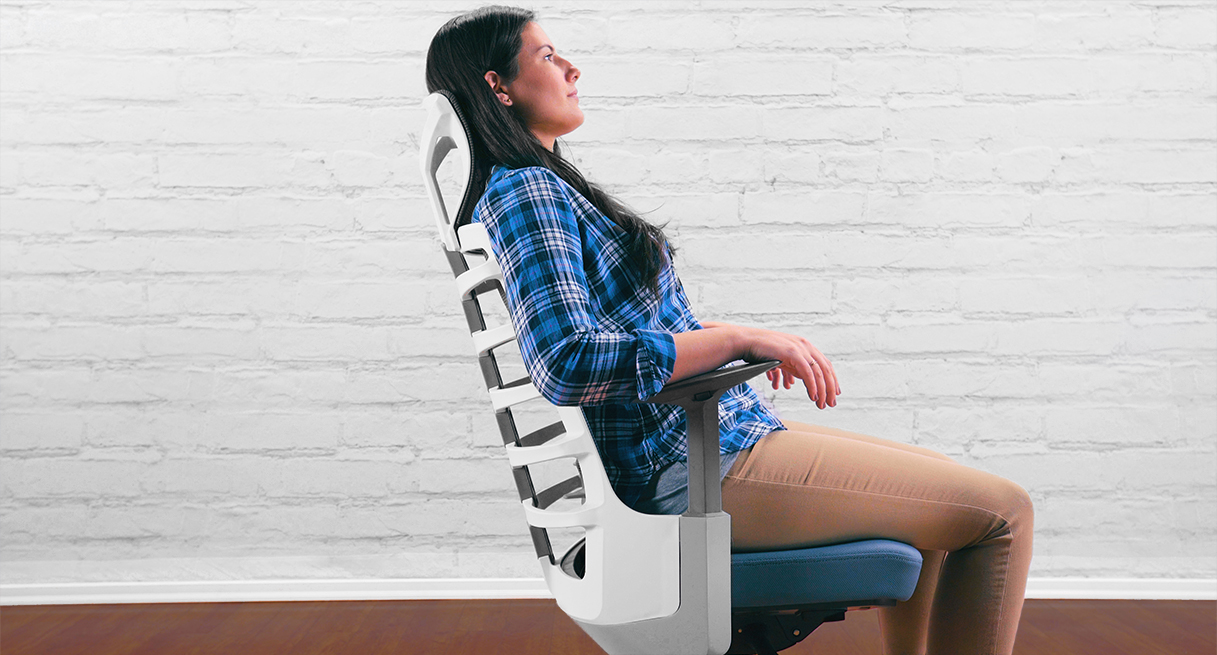
Lumbar support
Ergonomic chairs often come with built-in adjustable lumbar support features, which allow you to customize the amount of pressure applied to different parts of your spine and tailor the fit of the backrest. With the backrest adjusted properly, sit back in the chair and find where the small of your back lands. This is where the lumbar support should be positioned. Adjusting this feature reduces strain on lower back muscles and improves posture while maintaining the critical lumbar curve.
Recline & tilt angle
The recline and tilt angle should be adjusted to keep your feet flat on the floor and your knees at a 90° angle to your hips. UPLIFT Desk ergonomic office chairs use a carefully designed synchro-tilt mechanism that maintains a 2:1 recline angle ratio to open the hips and keep feet on the floor when reclining. Adjustments to these settings are handled differently on different chairs, and some allow for locked recline positions.
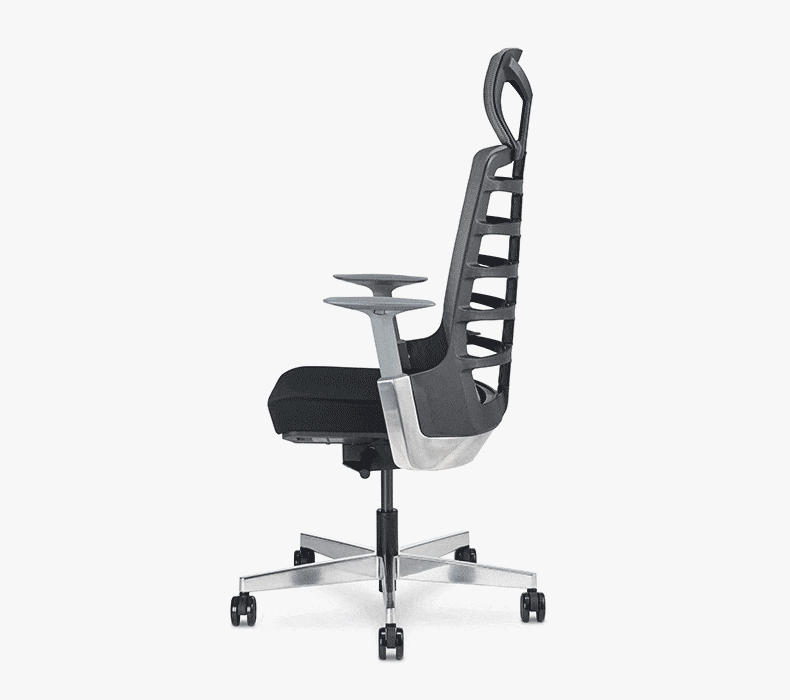
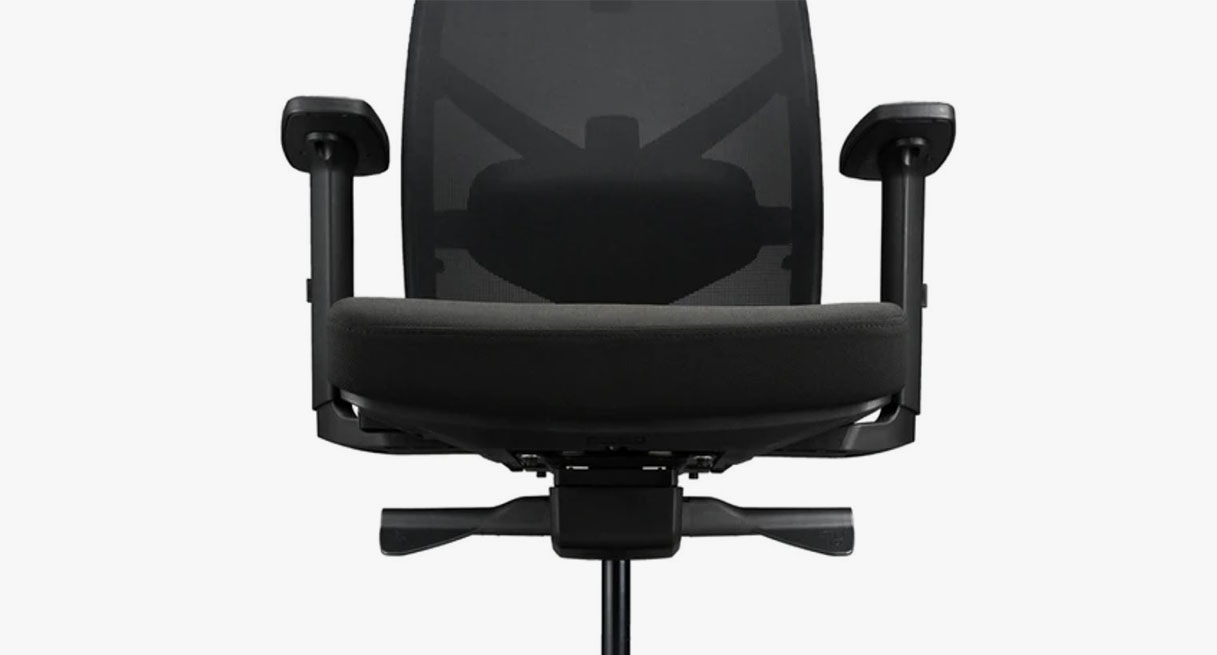
Seat height & depth
The seat height should be adjusted so that both feet are firmly planted on the ground when seated upright with a 90° angle at the knee and hip joints.
The seat depth should be adjusted to allow a 2-3" gap between the edge of the seat cushion and the backs of the knees when sitting all the way back into the chair. A chair with a waterfall seat edge also helps keep circulation flowing throughout both legs by preventing pressure build-up behind the knees.
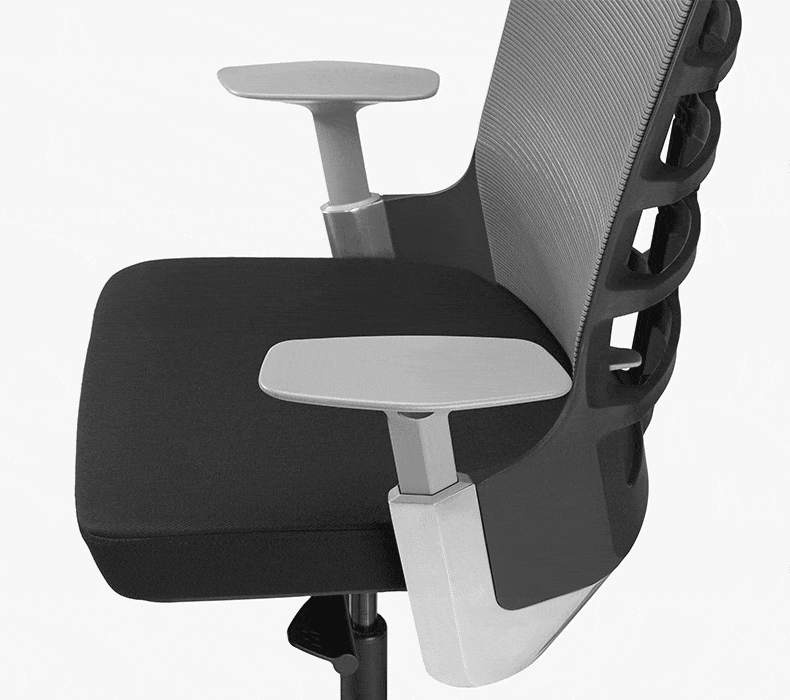
Armrests
Adjust the armrests to provide support without putting too much pressure on the forearms or straining the arms when typing or mousing. Armrest adjustments can include height, width (or distance apart), tilt, and rotation angle. Make sure your relaxed, bent arms rest comfortably on the armrests with a 90° bend in the elbows and full contact is being made along the length of the forearm for full support.
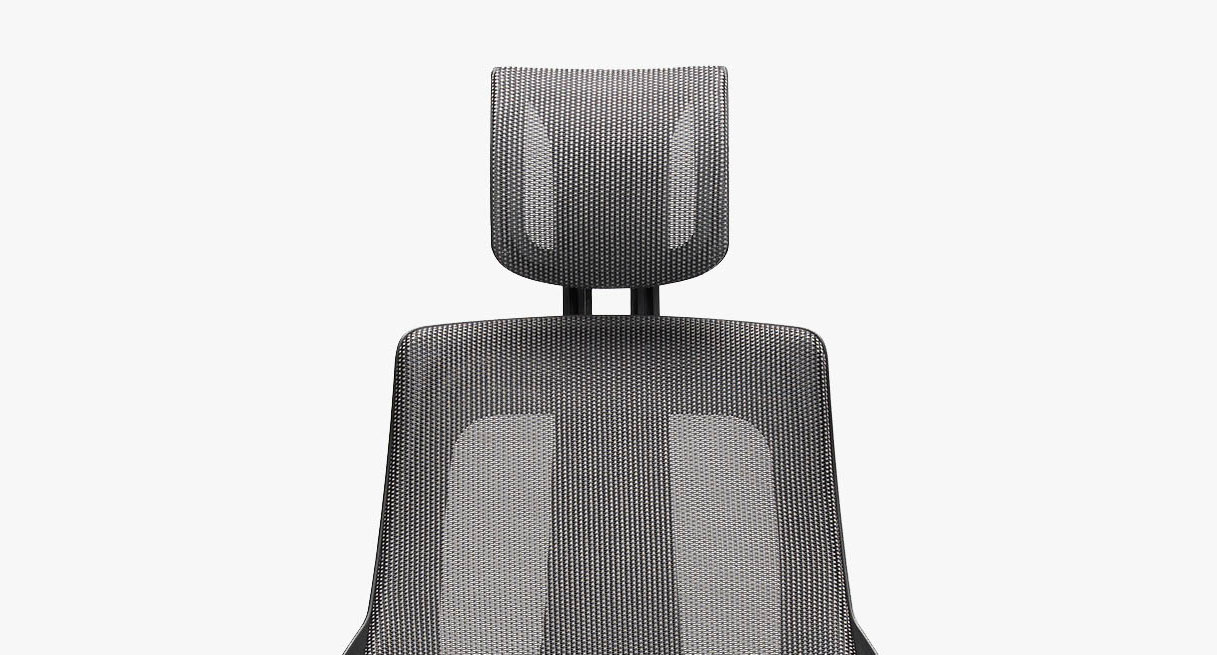
Headrests
The headrest is an important part of any ergonomic chair. It should be adjusted so that it supports the weight of the head when you lean back in your chair. Ensure that the headrest is not pushing your neck forward or backward too far—it should be positioned so that the neck is in a neutral position and aligned with the spine. To adjust the headrest, simply move it up or down until it feels comfortable against the back of your head.
How not to sit in an ergonomic chair
It's important to remember that an ergonomic chair is not a substitute for proper posture or moving throughout the day. Avoid hunching or slouching over while using your desk/workstation, as this can cause long-term damage to your spine over time. Additionally, it's important not to get too comfortable in your chair. Try setting an alarm every hour or two as a reminder to stand up and stretch your legs and arms or take a quick walk before sitting back down in your chair. This will help prevent stiffness, fatigue, and poor circulation that comes from staying in one position for too long. Alternating between sitting and standing at an adjustable height desk is ideal. Check out the UPLIFT Desk App for easy reminders to change position.
Time spent sitting
Regular movement is essential to maintain good health and performance, especially during a workday. Numerous studies have demonstrated the immense value of regular physical activity, with one study conducted at the University of Sydney finding that workers who exercised for 15 minutes every hour were 12% more productive than those who stayed seated throughout their day. This is due to the fact that regular physical activity helps improve circulation, energy levels, and encourages the production of endorphins which can help reduce stress and anxiety.
Ultimately, an ergonomic chair is only one part of a healthy work environment. While it can help you maintain proper posture while seated at your desk/workstation, it's important to remember that regular movement and exercise are essential to your overall well-being. Taking breaks every hour or two for a few minutes of movement can help keep your body healthy and your mind sharp throughout the day. A standing desk can help you stay active while working, but it's important to remember that even with an ergonomic chair and standing desk, regular movement is key.
